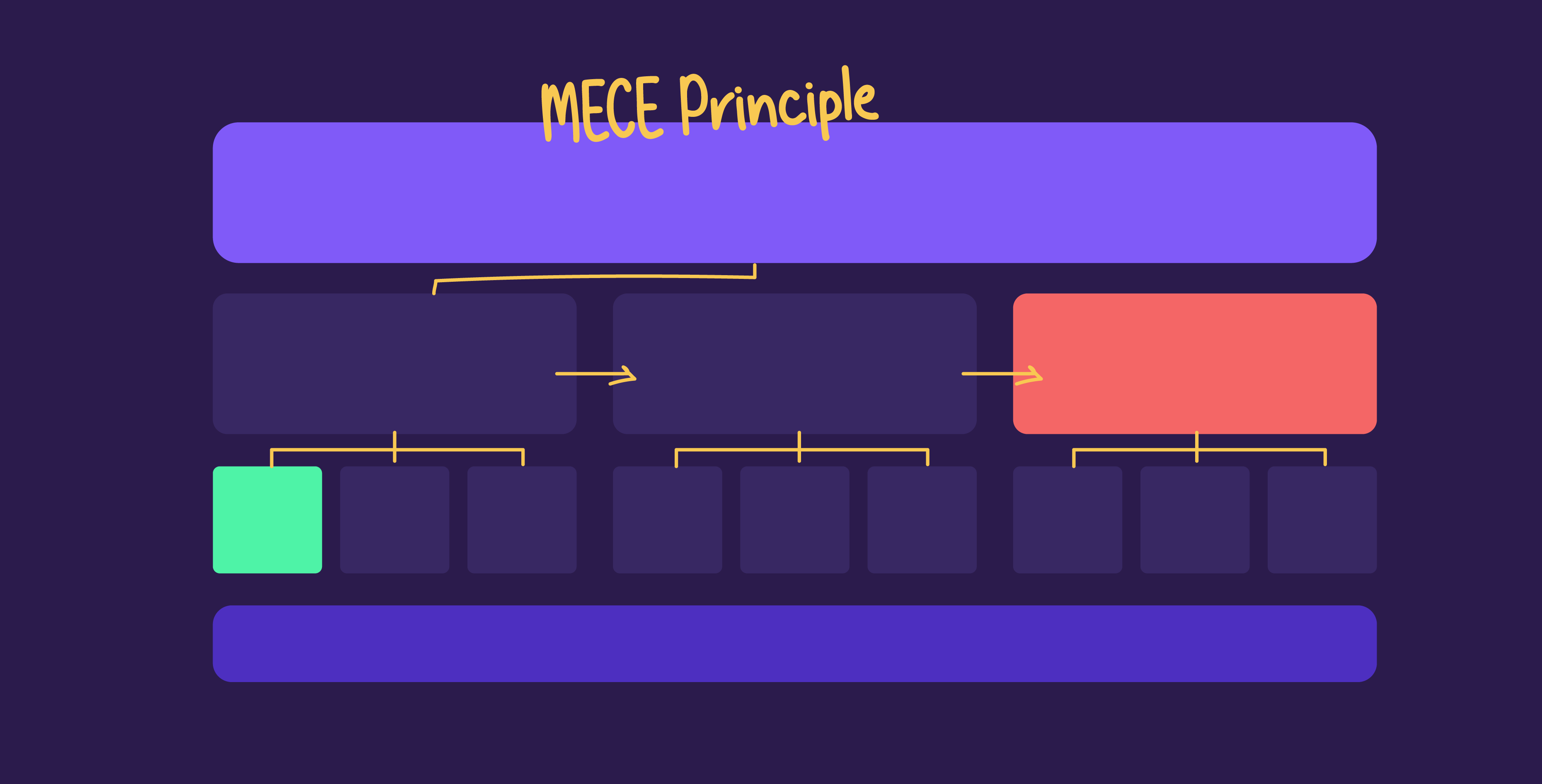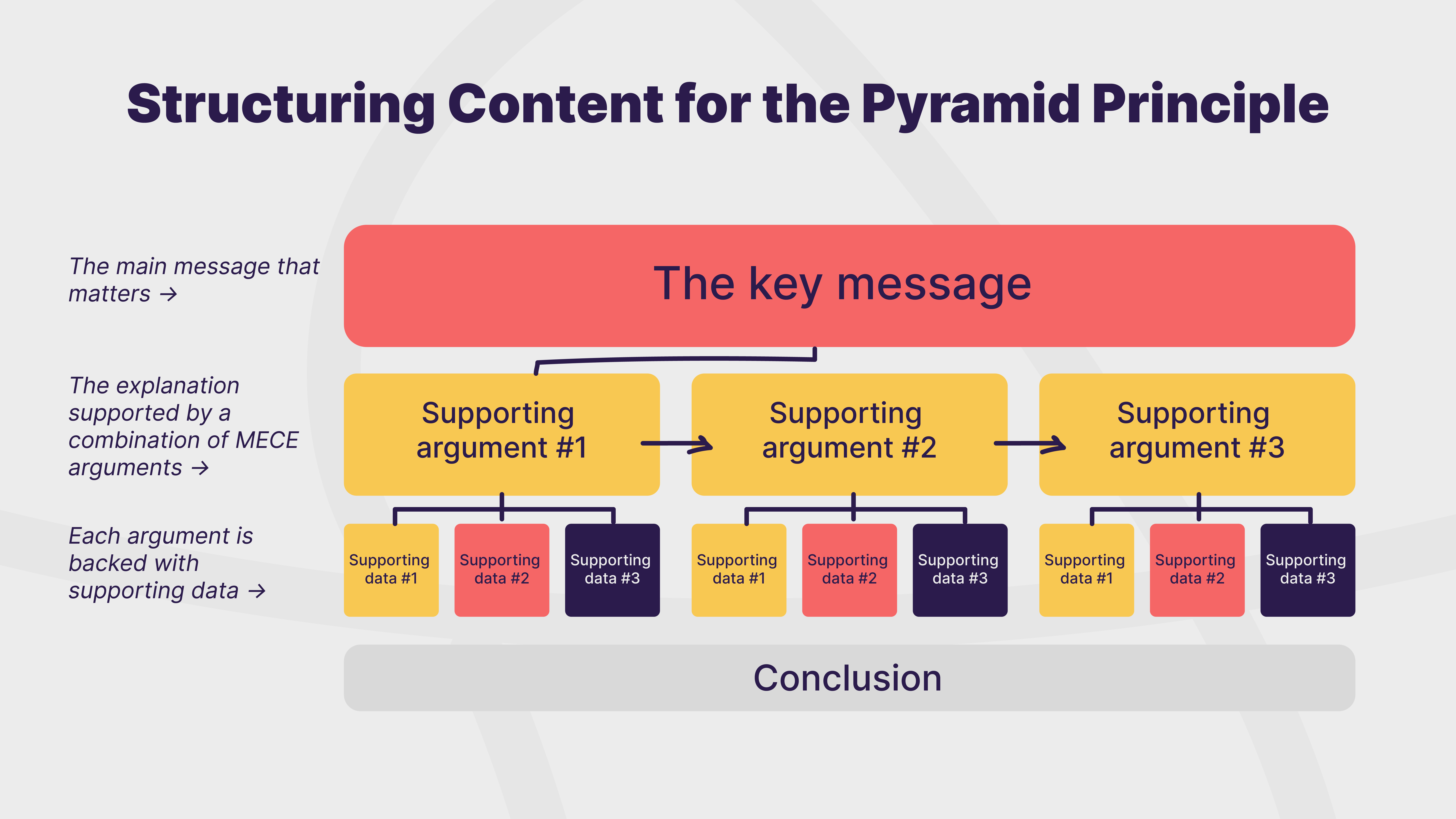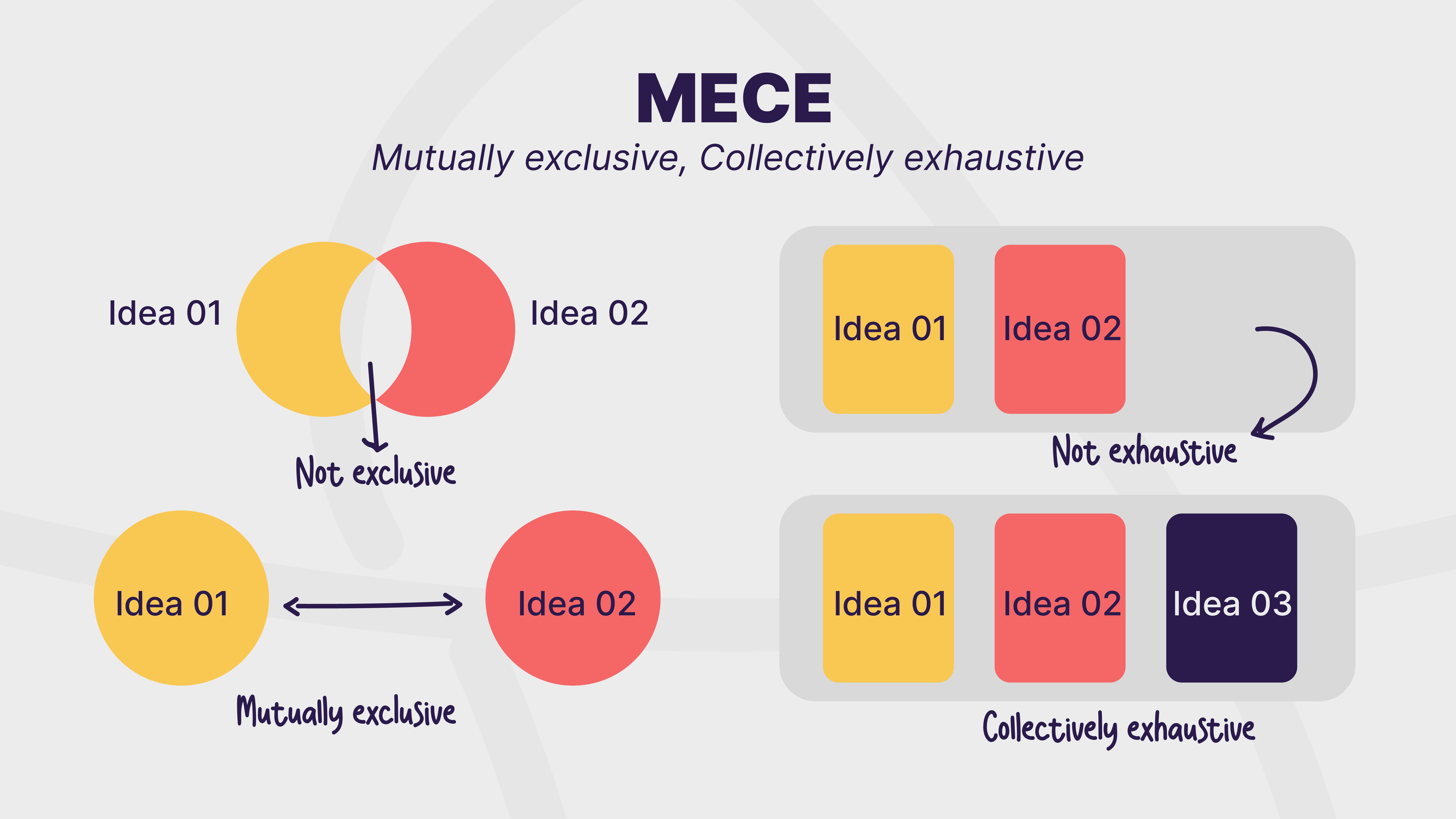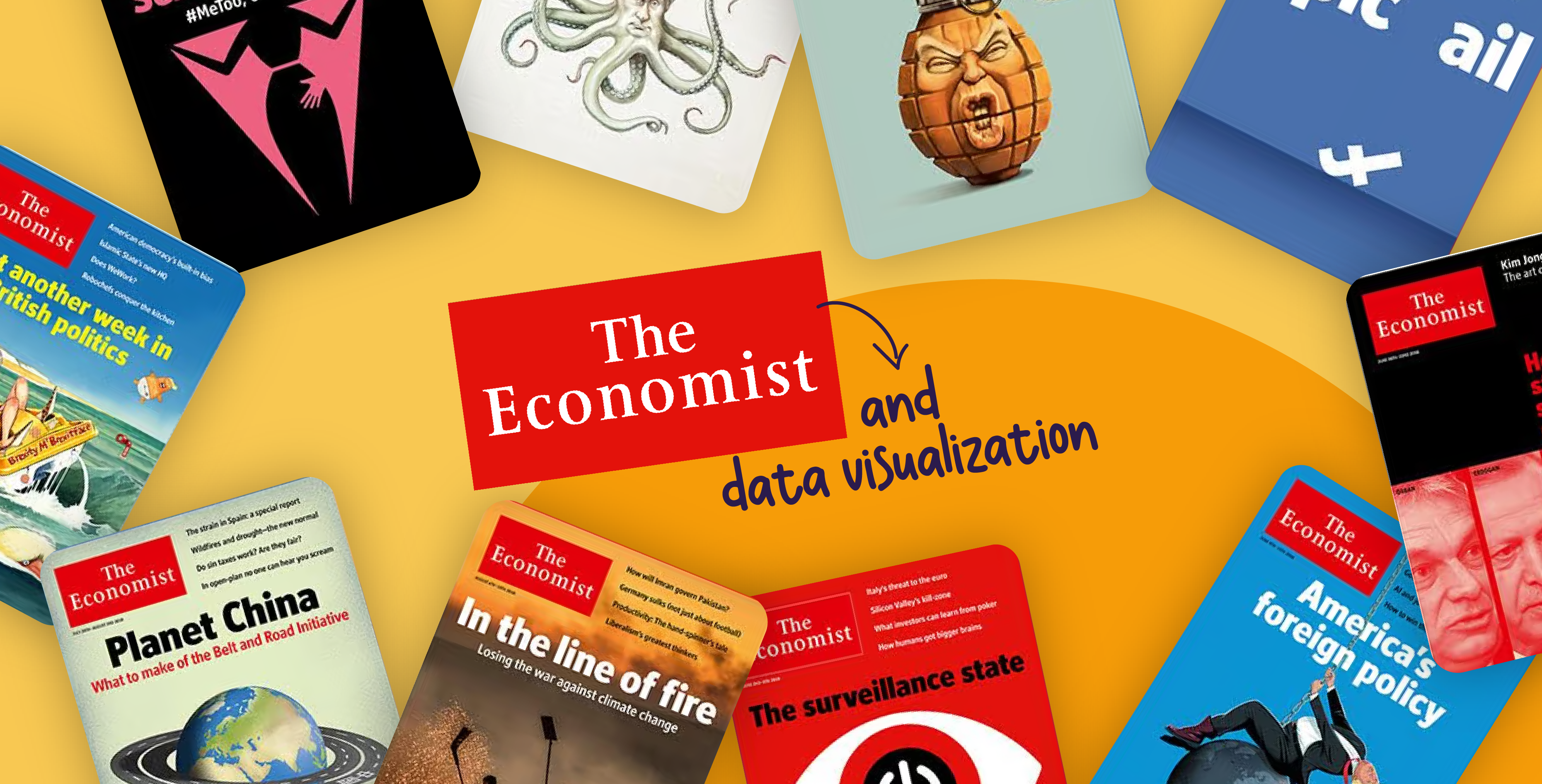15 July 2024
When preparing for a consulting presentation, one term you must know is MECE. The MECE principle is a strategic problem-solving tool that helps organize ideas clearly to ensure that they are both distinct and comprehensive. It is a way of thinking that enables consultants to structure their solutions so that no possibility is overlooked. MECE is essential not only as a way to frame problems but also in crafting powerful and persuasive storytelling in presentations.
What is the MECE principle?
The MECE principle, standing for “mutually exclusive, collectively exhaustive,” is a framework used in consulting to group ideas effectively to cover all options without overlapping. It lets the user structure their ideas and solutions to avoid double-counting potential solutions and ensure a comprehensive probe into each idea. Mutually exclusive refers to options that each fall into one different category, while collectively exhaustive refers to when each option is represented.
The MECE principle is an indispensable tool for brainstorming, problem-solving, and planning and helps consultants frame their solutions clearly and effectively. When used in a PowerPoint presentation, it allows professionals to smoothly navigate through tricky problems and guide their clients toward informed and clear-headed decision-making.
The origin of the MECE Principle
Barbara Minto, who created the pyramid principle, was a strategy consultant at McKinsey when she also invented the MECE principle. Although she credits Aristotle with the original idea due to his view on logic and categorization, MECE is a fundamental concept that underlies the original pyramid principle by helping group ideas logically to let consultants organize their communications.
How is MECE used with the pyramid principle?
The MECE principle and pyramid principle complement each other in practice when it comes to structuring ideas and their communication. MECE ensures that the information is categorized without overlap, covering all possibilities, to form the basis of a solid argument. The pyramid principle then takes each of these categories and arranges them into a hierarchy to create a logical flow of ideas from most to least important. Together, both of these methodologies work together to facilitate clear and impactful communication, allowing professionals to present complex information in an organized and persuasive manner.
Breaking down the MECE principle
To ensure comprehensive and efficient analysis, the MECE principle approaches information through two main lenses, mutually exclusive and collectively exhaustive:
Mutually exclusive
The first part of the MECE principle is the concept of mutual exclusivity, whose purpose is to ensure efficiency and clarity in problem-solving. It aims to categorize topics as distinct with no overlaps, like non-intersecting circles in a Venn diagram. For example, an efficient mutually exclusive approach would categorize each idea into distinct groups to guarantee separation. This then allows you to explore each idea or dataset in a way that avoids redundancy and optimizes your time.
Collectively exhaustive
The collectively exhaustive concept is a vital counterpart in the MECE approach that ensures comprehensiveness in the problem-solving process. This part attempts to cover the problem’s full spectrum and leaves no stone unturned. In practice, this means categorizing issues to encompass the entire problem without omitting any details. Through a collective exhaustive approach, you reevaluate what is missing from the mutually exclusive approach and integrate it into a more comprehensive analysis. The MECE approach must be both mutually exclusive and collectively exhaustive to ensure that all possible solutions are addressed and explored.
MECE in practice
The MECE framework is a super useful tool for making vital business decisions, offering a structured and segmented approach that clarifies different business areas. For example, regarding consumer targets, MECE allows an in-depth analysis of customer groups by separating them into profitable segments to help shape targeting strategies. Product targeting is also an area that benefits from MECE, as it facilitates cost allocation for different products and highlights the most lucrative ones for increased promotional efforts. Unfortunately, many companies underestimate MECE’s potential for streamlining focus and decision-making. But for consultants, coming from an external point of view that is divorced from the daily operations, allows for a more intentional application of MECE.
Why is MECE important?
Being able to deconstruct and dissect complex issues into compartmentalized segments allows consultants to pinpoint critical factors that drive impactful results. Breaking down a problem into segments allows for a more structured approach to analysis and resolution. While both parts of the MECE principle are essential, a collectively exhaustive analysis in the initial stages of a project ensures that the analysis is thorough. This kind of exhaustive exploration would guarantee that the solution to the dilemma is automatically embedded in the overall strategic framework.
How can I use MECE in a consulting presentation?
In a consulting presentation, the MECE principle plays a role across several stages, from the case opening to the recommendations. Initially, it will help in defining and segmenting the problem, and during framework development, it provides a structured approach to problem-solving. MECE is also an important tool for data analysis and hypothesis testing, as it keeps the process focused. Ultimately, aligning recommendations with the MECE framework is a thorough and comprehensive problem-solving strategy. Within consulting presentations, the MECE principle allows consultants to tackle any tricky challenges methodically and strategically.
Moving through the tricky landscape of problem-solving and decision-making, MECE emerges as a compass to guide us through. This framework sharpens our analytical skills and strategic thinking, and by working through the MECE structure, we move towards more efficient and comprehensive solutions. Whether consulting slides or otherwise, here at Prezlab, we create presentations that prioritize clarity and success in all cases.








